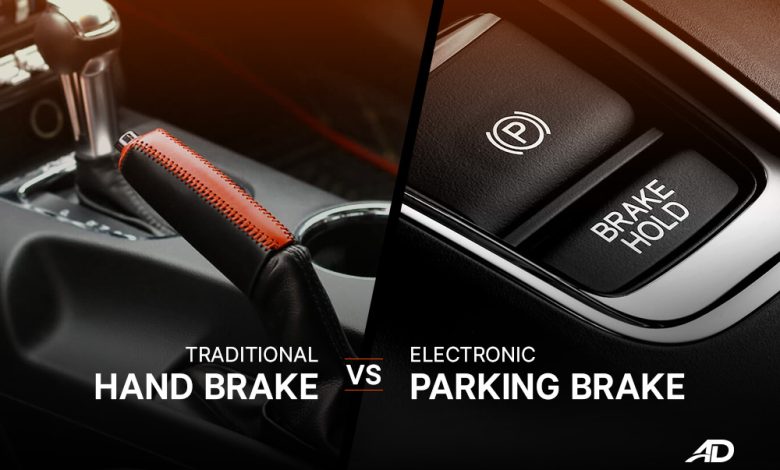What is Hand Brake or Electronic Parking Brake?

Emergency brake or parking brake is another name for a hand brake. The hand brake is helpful to keep the car stationary in the parking area, to avoid rolling down on an inclined road. Sometimes, the drivers use it as an emergency brake in unfortunate circumstances. Some racers use a handbrake to drift the brake as well. An electronic parking brake or EPB is an advanced edition of a parking brake to make driving easier than a hand brake. When applying an electronic parking brake, the motors on each caliper press the pads into the disc, resulting in the stopping of the vehicle. Electronic parking brakes work by laying a right foot on the brake and lifting a small button tagged as “P” in the middle of the console. So, car brake pad replacement is necessary after a certain period.
The function of Handbrake and Electronic Parking Brakes:
In a conventional handbrake, the driver utilizes the lever, the tension in the cable forces the brake shoe or brake pads to stop the rear wheels. However, in an electric parking brake, there is no cable connection but it works with the help of an electronic brake module, an electric switch in cable and an electric motor.
Car Brake Pad Replacement:
The precise number varies depending on driving styles and their use, however brake pads are necessary to replace after 25,000 to 65,000 miles. You can notice some changes before replacing the car’s brake pad. Here are the common reasons to replace the car brake pad.
-
Screeching sound coming from brakes:
When you press the brake and they start to wear and tear and you can hear a screeching sound. The reason is that manufacturers set a piece of metal in the brake pad as an indicator to give a warning that you need to change brake pads.
-
Vibrating steering wheel:
When the vehicle pads drag on the rotors, the brake pads or brake rotors can become damaged. The uneven brake pad is the reason for the throbbing. Car brake pad replacement is necessary at this stage.
-
Less stop time:
If you are experiencing more time to stop the vehicle, there may be leakage of fluid or worn out pads. Take help by visiting brake technicians as soon as possible.
-
Brake pads wear indicator:
The friction material helps the brake pads to grab the rotors. This friction material reduces with time. When brake pads start to lose thickness, these tiny sensors send you a message of warning through light. This self-explanatory signal cautions you that car brake pad replacement is necessary.
-
Rubbing/ grinding sound when braking:
When you apply brakes, you hear a mashing sound, it is an indicator that your vehicle’s brakes need replacement. You should take action to avoid further loss as soon as possible.
-
Regular checkup:
You can witness the thickness of the car pads by inspection. Look at brake pads carefully, if the thickness is less than a ¼ inch, there is a great need for car brake pads replacement nearby.
If you notice any of these signs of changes, you must visit a mechanic for a healthy life for your vehicle.




